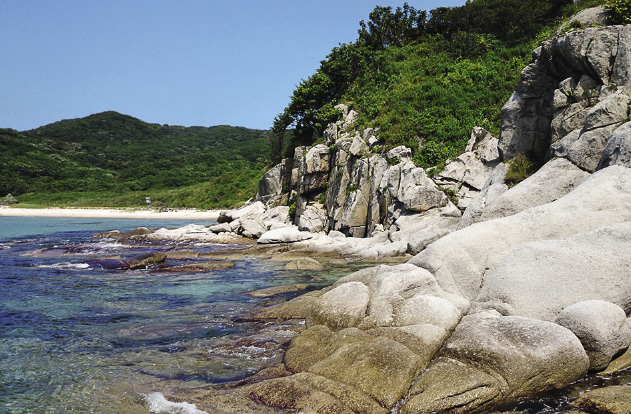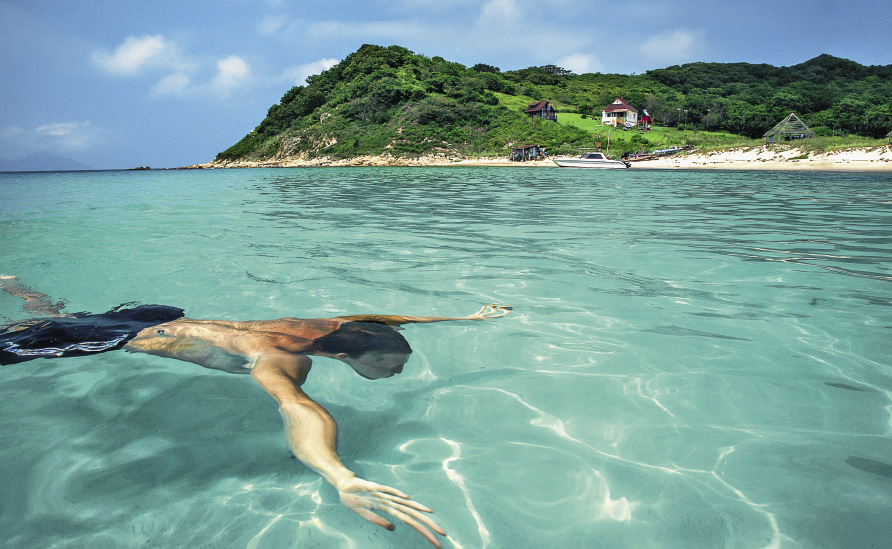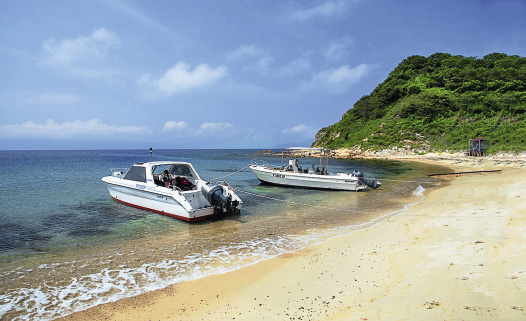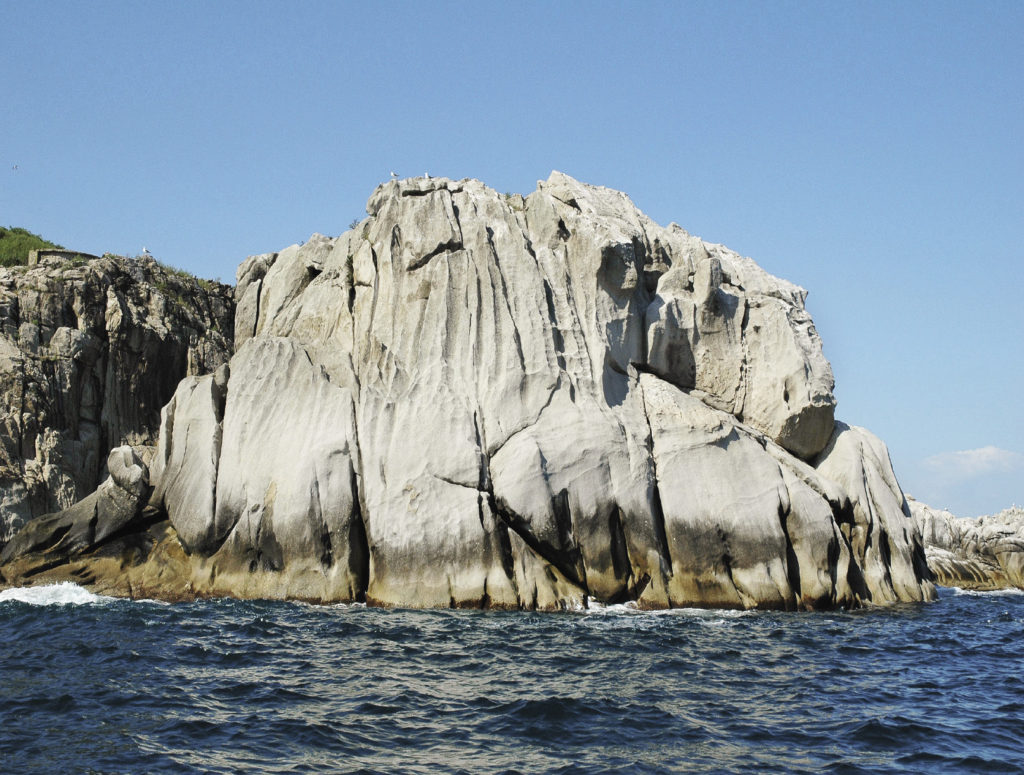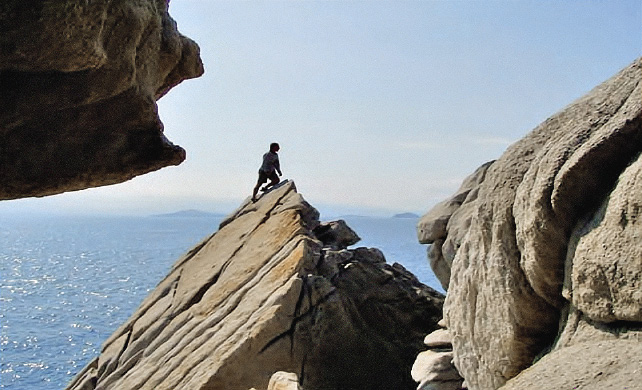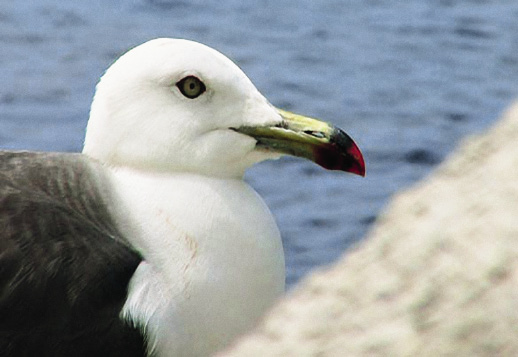Furugelm Island is the southernmost island not just in Primorye, but in the whole of Russia. It stands in the south-west of Peter the Great Gulf, not far from the border with China and 110 kilometers from Vladivostok.
Text: Vasiliy Avchenko, Alexander Syrtsov
When it comes to mysticism, Furugelm Island probably takes a wellearned second place behind the legendary Petrov Island in Lazovsky Nature Reserve. Dotted with stone columns, the landscape of this southwestern outpost of Russia can rival for beauty the Similan Islands in the Andaman Sea off the coast of Thailand – a dream destination for many tourists from the Russian Far East.
First mention of the island can be traced back to 1854 and the crew of the Pallada, the frigate from which Admiral Yevfi miy Putyatin and the great Russian novelist Ivan Goncharov surveyed the coasts of the Far East. Th e island was named aft er one of the expedition’s participants – Johan Furuhjelm, who would subsequently rise to the rank of admiral and serve as the military governor of Primorskaya Oblast and Russia’s American territories, one of the biggest names among the Finns of the Far East alongside merchant Otto Lindholm and captain Fridolf Höök.
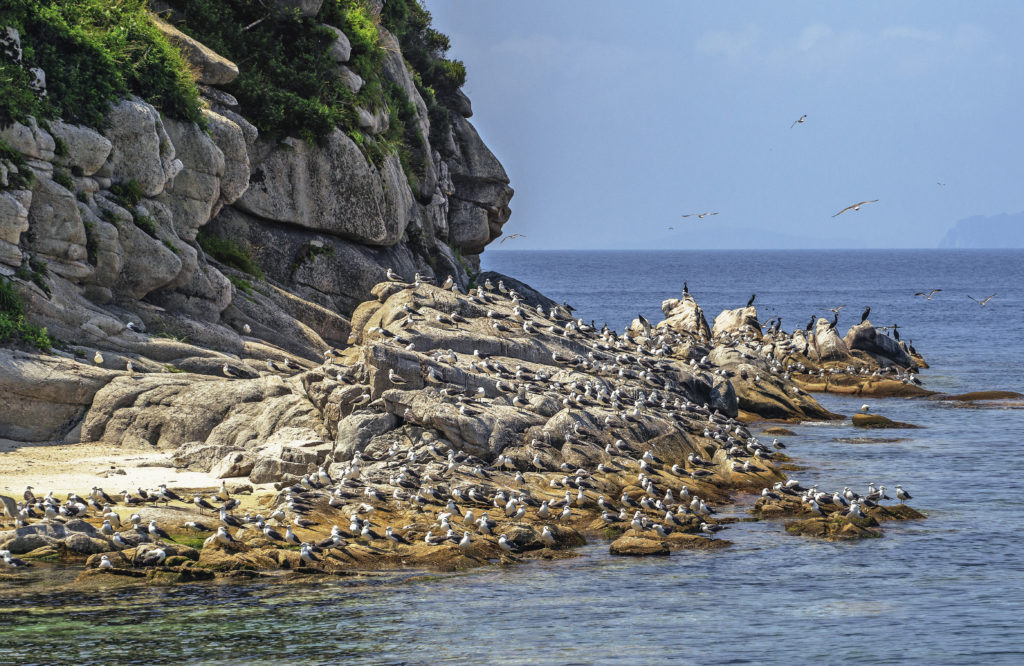
From the 1930s to the 1960s, there was a garrison stationed on the island that numbered up to 600 men. On the island’s peak the remains of Artillery Squadron 250 of the Khasansk Sector Coastal Defense can be found, including four 130mm gun turrets. Th ey were mounted here immediately after Japanese incursions onto Soviet territory in 1938 that culminated nearby at the Battle of Lake Khasan. Th e guns “secured” an area with a radius of 30km, from Gamov’s Cape and Posyet Bay to Khasan. Th is artillery post was the only one of the military installations scattered across the peaks and capes of southern Primorye that was ever used in battle.
Nature – the artist, has sculpted extraordinary vistas for tourists.
From the peaks of Furugelm, you
have a clear view of not only the adjacent Russian coastline, but also of the shores of North Korea, and
the mountains of China.
Today, the overgrown ruins of the barrack houses seem like the remains of some ancient civilization. Here and there jut out a chimney stack, the crumbling walls of the offi cers’ mess, or the mound of a munitions bunker. Rumor has it that ghosts can be seen here at night. Among the sights is the tomb of Red Army soldier Nikolay Yedintsov, who died here in 1939.
When it comes to mysticism, Furugelm Island probably takes a well-earned second place behind the legendary Petrov Island in Lazovsky Nature Reserve. Dotted with stone columns, the landscape of this south-eastern outpost of Russia can rival for beauty the Similan Islands in the Andaman Sea off the coast of Thailand – a dream destination for many tourists from the Russian Far East. And this island off the Khasan Coast is no stranger to tsunamis, either. According to the recollections of Valentina Grigoryevna Belyaeva, wife of artillery commander Fyodor Belyaev, there was a time in the 1950s when a wave swept away 12 artillery rounds and all the garrison’s coal stores – 180 tonnes.
The beach in the West bay, which marks the boundary of the nature reserve, is notable for its emarkably white sand.
Granite cliffs near Bochkov’s Cape.
However, it’s only memories that remain from that era. Now the silent, rusting barrels are a perch for seagulls. The island has the largest colony of black-tailed gulls in the world and, as July turns to August, the fledgling black-tails can be seen over the flower-strewn bluffs, learning to maneuver and find their own food.
Among the other birds on the island are cormorants, rhinoceros auklets, and spectacled guillemots. Furugelm is the only place in Russia where black-faced spoonbills and Chinese egrets nest, and the island is also a resting post for migrating petrels and sea eagles. The calls and squabbles of these myriad birds form a constant soundtrack on the island.
From the peaks of Furugelm, you have a clear view of not only the adjacent Russian coastline, but also of the shores of North Korea and the mountains of China. The beach in the West bay, which marks the boundary of the nature reserve, is notable for its remarkably white sand, which gives a soft pale-green tone to the coastal waters. Furugelm boasts a wealth of flora: vines, oaks, Amur cork tress and Amur barberries, cherry trees and “soothing” wormwood. Here, in these subtropical southern climes, every plant has a story to tell.
Due to the thick, genuinely tropical undergrowth, this tiny island – 2.5 by 1.5 kilometers – is not easy to get around. Only the traces of the former military paths have survived, and these are now used by tour groups. The only way to reach this frontier of the Russian world is through the Far Eastern Sea Reserve, and tours only last for a few hours.

